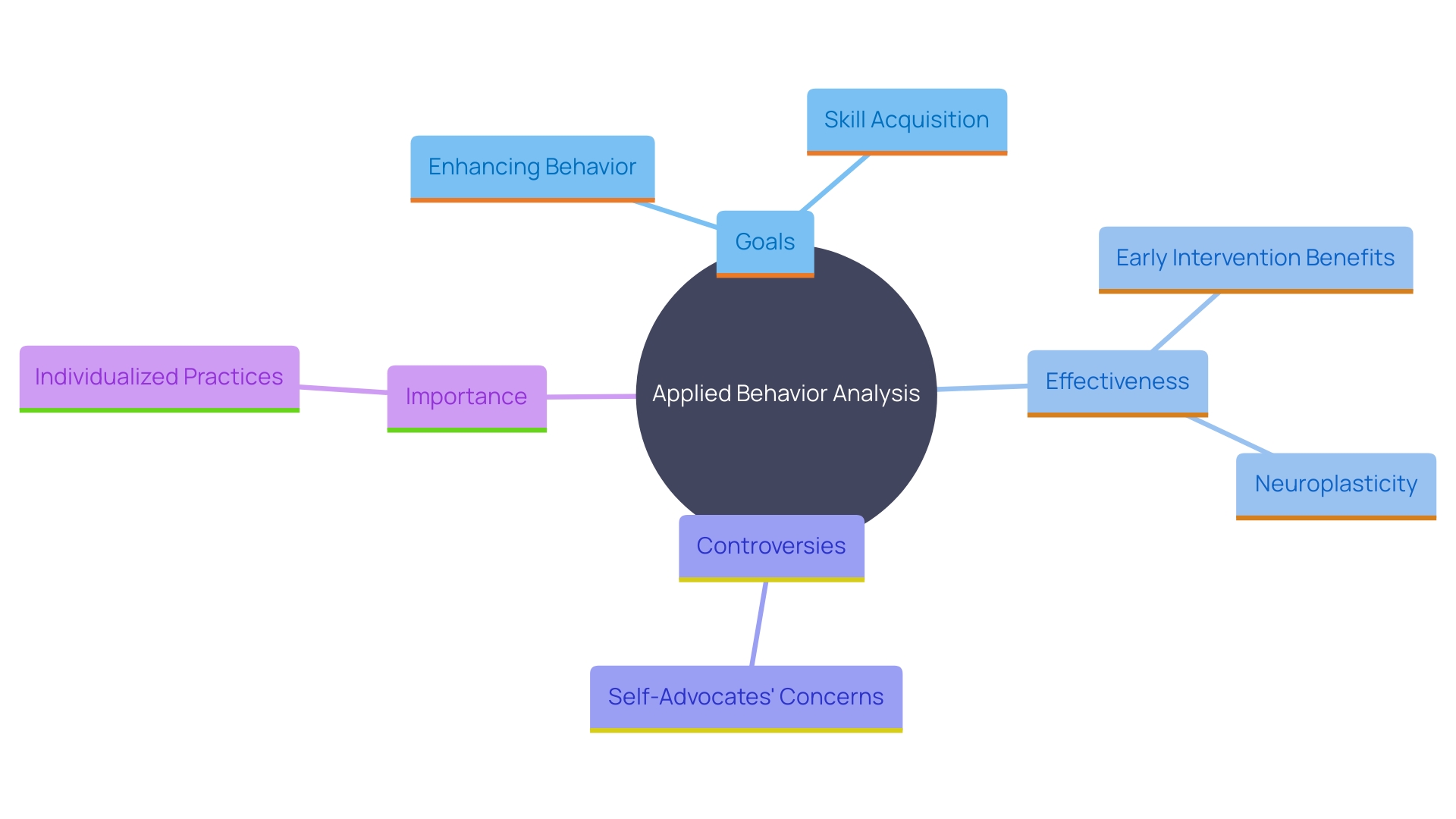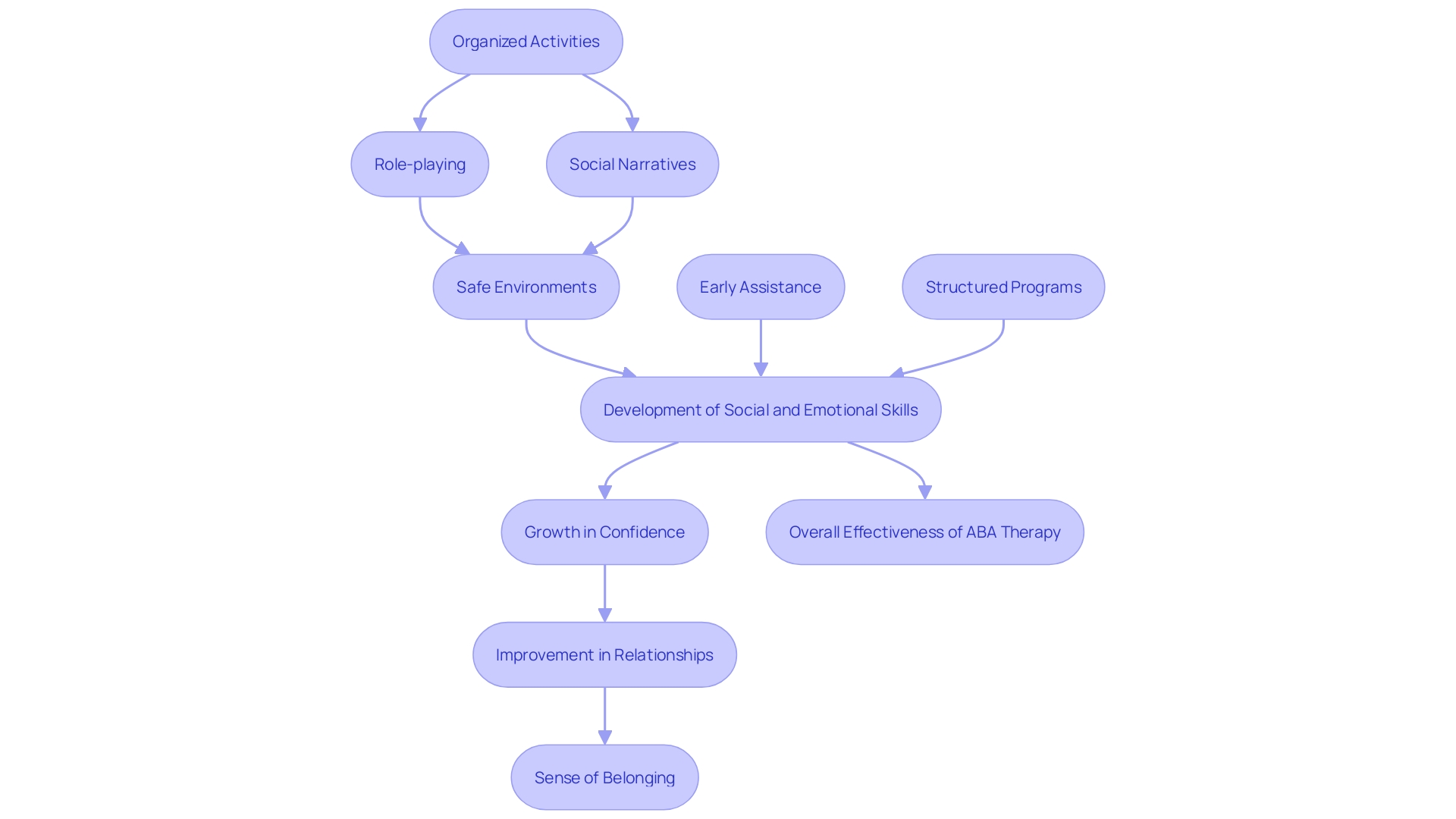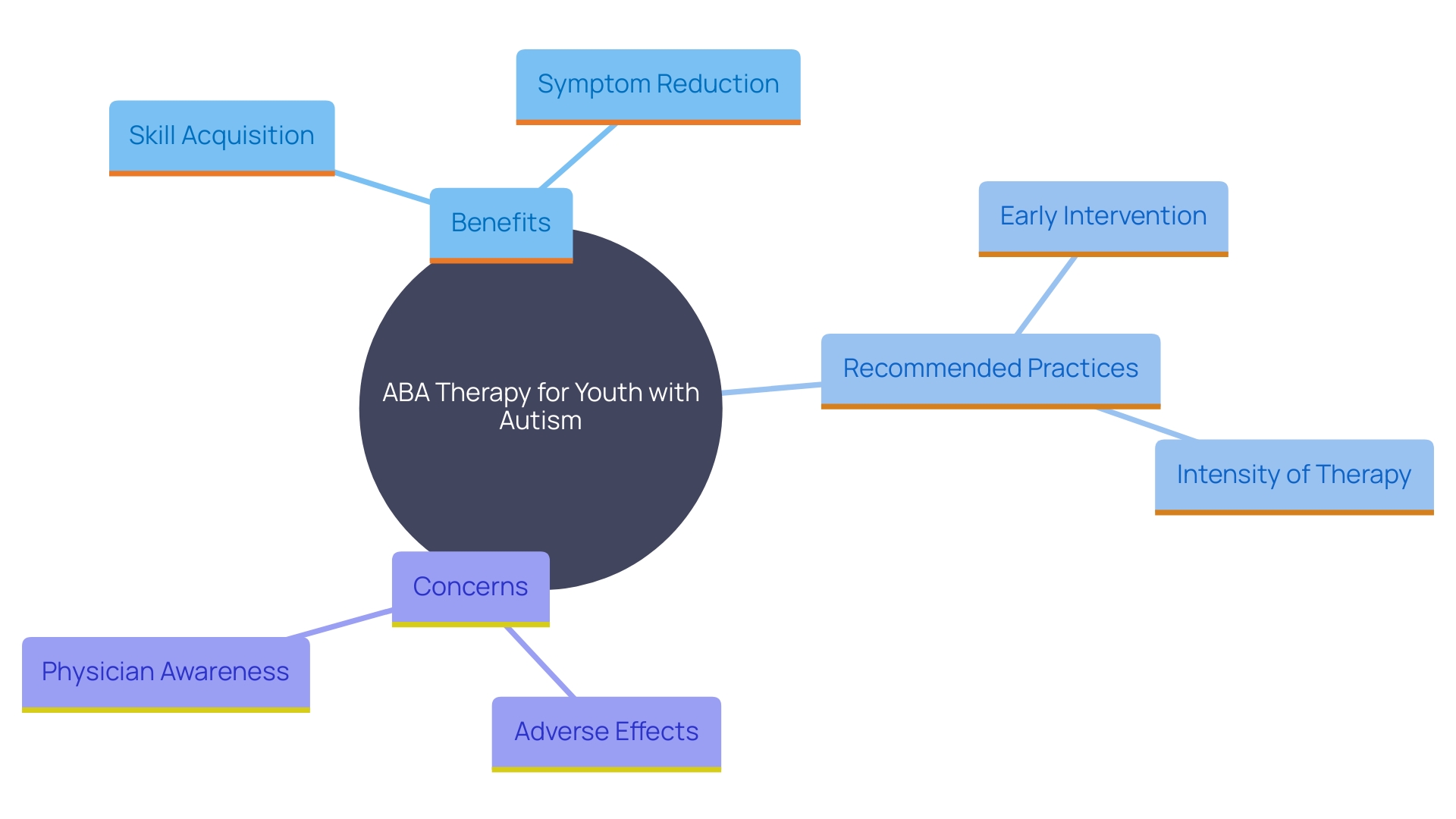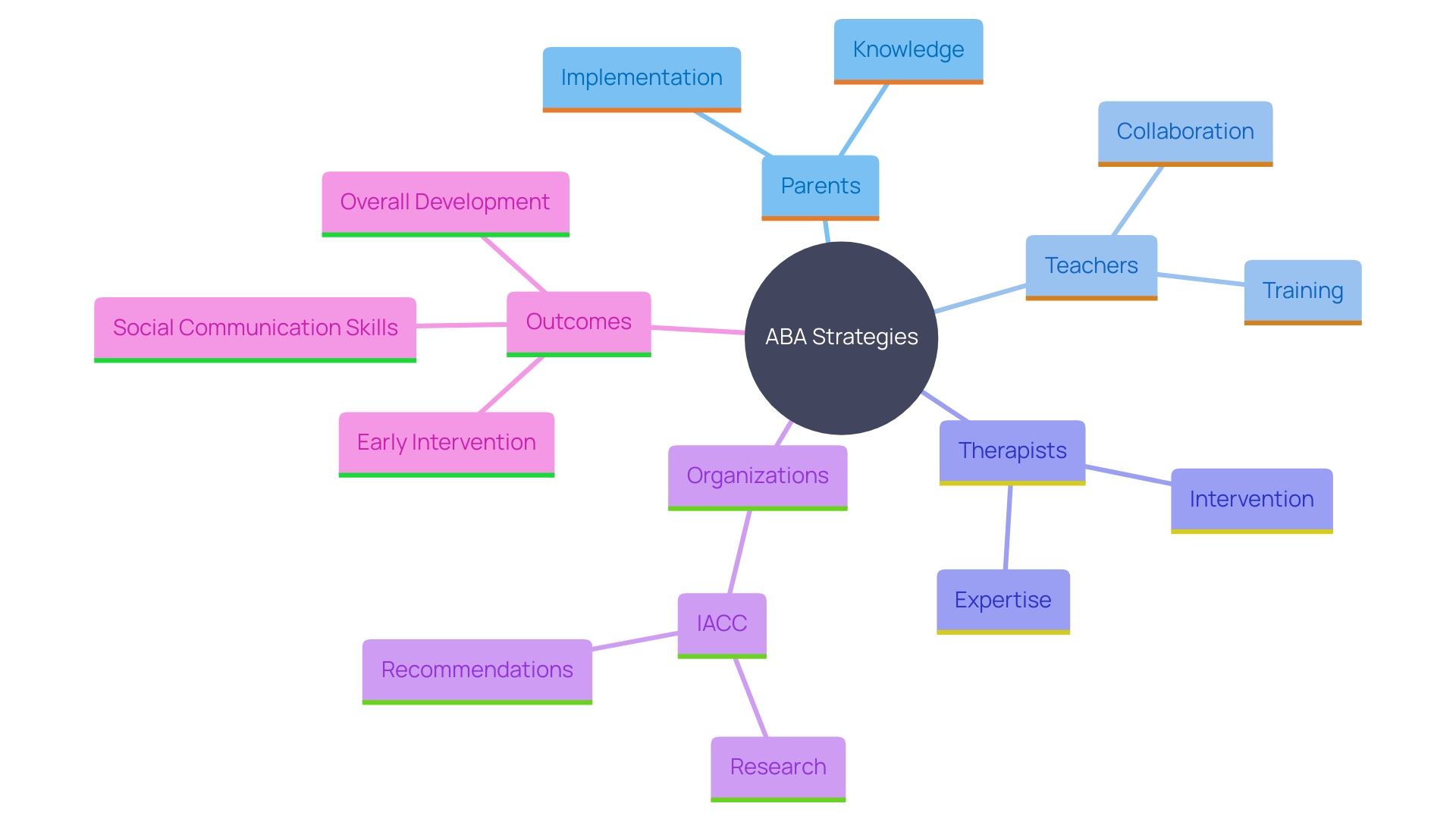Introduction
Navigating the journey of raising a child with autism spectrum disorder (ASD) can be challenging, but understanding and utilizing effective interventions like Applied Behavior Analysis (ABA) can make a significant difference. ABA is a scientifically validated approach focused on improving specific behaviors, such as social skills, communication, and learning abilities, through principles of learning and behavior. This method has been instrumental in helping children with ASD achieve meaningful progress, especially when implemented early and intensively.
Despite its proven benefits, ABA therapy has not been without controversy. Some critics argue that it may teach children to suppress their autism traits rather than embrace them. However, when applied thoughtfully and collaboratively, ABA can empower children to thrive by reducing challenging behaviors and enhancing their ability to interact with others.
By delving into the various aspects of ABA, including its benefits, implementation strategies, and addressing concerns, this article aims to provide parents with the knowledge and resources needed to make informed decisions about their child's well-being and development.
What is Applied Behavior Analysis (ABA)?
Applied Behavior Analysis (ABA) is a scientifically validated method aimed at understanding and enhancing human behavior, particularly for individuals with developmental conditions. By applying principles of learning and behavior, ABA aims to bring about meaningful changes. Techniques used in ABA focus on observable behaviors and can help individuals learn new skills, reduce challenging behaviors, and improve their ability to interact with others.
The effectiveness of ABA therapy has been supported by numerous studies. For example, early intensive behavioral support within the age range of one to three years can be notably advantageous due to the phenomenon known as neuroplasticity in the infant brain. This early intervention can lead to improved results, including greater independence and higher IQs for individuals with developmental disorders.
However, ABA has not been without controversy. Some self-advocates have reported negative experiences, raising concerns that the treatment may teach individuals to hide their autism traits. Zoe Gross, director of advocacy at the Autistic Self Advocacy Network, has expressed concerns about the philosophy behind ABA and its effects on autistic people. Despite these criticisms, proponents argue that ABA can significantly reduce challenging behaviors and improve the quality of life. The third edition of clinical practice guidelines emphasizes shared decision-making and collaboration with consumers and caregivers to address these concerns.
It is essential to acknowledge the diversity in the practice and outcomes of ABA therapy. As Andy Shih, Autism Speaks’s chief science officer, notes, the quality of ABA services can vary greatly depending on the training and experience of the therapists. A skilled practitioner working in the right conditions can succeed in changing behaviors, especially those that put a young person at risk.
In summary, while ABA therapy is a widely used and effective intervention for individuals with ASD, it is crucial to ensure that it is implemented thoughtfully and with consideration of the individual needs and perspectives of the clients and their families. This approach fosters a more inclusive and supportive environment for all.

Benefits of One-on-One ABA Therapy
One-on-one ABA therapy provides highly customized assistance, allowing therapists to meet each individual's unique requirements specifically. This personalized attention fosters a stronger therapeutic relationship, enhancing the individual's engagement and motivation. For instance, a study highlighted that during the process, inappropriate comments and interruptions significantly decreased, showcasing the effectiveness of personalized approaches. Parents often observe remarkable improvements in their offspring's communication skills, social interactions, and daily living abilities. This is vital as early, family-empowering interventions directly address the fundamental social challenges associated with the condition, ensuring improved developmental results. Moreover, the personalized nature of ABA therapy allows for immediate adjustments in strategies based on the individual's responses, maintaining the therapy's relevance and effectiveness. This approach is supported by evidence showing significant positive effects on social communication and adaptive behaviors, thereby reinforcing the importance of customized care in promoting meaningful progress.

How ABA Improves Social and Emotional Skills
ABA therapy is instrumental in enhancing social and emotional skills in individuals with autism. Through organized activities, such as role-playing and social narratives, young individuals learn to recognize and articulate their feelings suitably, identify social signals, and participate in constructive interactions with their peers. These techniques are employed in safe environments, allowing children to practice and refine their skills. As they develop these abilities, their confidence grows, leading to improved relationships and a stronger sense of belonging.
A study involving a 13-year-old female with autism demonstrated the effectiveness of organized approaches. Using an ABAB design, researchers combined response interruption and redirection (RIRD) with self-monitoring, significantly reducing inappropriate comments and interruptions. During the assistance phase, the participant's average inappropriate comments fell from 6 to 0.63, and interruptions reduced from 6.17 to 1.5.
The significance of early assistance is widely acknowledged, with pediatricians frequently guiding families toward early childhood programs. In the United States, early intensive behavioral support is commonly recommended, involving 20-40 hours of therapy per week to target functional skills through operant conditioning. Evidence indicates that developmental programs enhance social communication and tackle fundamental difficulties related to autism, particularly in interactions with caregivers.
A news article emphasized the achievements of a comprehensive behavioral approach in Geneva, where more than a hundred young individuals with autism gained from the technique. Researchers employed eye-tracking technology to comprehend how the program contributed to the young individuals' progress, aiming to enhance strategies for supporting their development.
Overall, ABA therapy's organized method and practical use assist young individuals with developmental disorders in developing vital social and emotional abilities, promoting their growth and inclusion in society.

The Importance of Early and Intensive ABA Intervention
Studies have regularly emphasized that prompt and thorough support utilizing ABA principles can result in more positive results for youth with autism, with approximations indicating around 1-4% of the population is impacted. Engaging in ABA therapy at a young age helps children acquire critical skills during their formative years. Pediatricians often guide families to such measures, emphasizing their role in laying a strong foundation for future learning. In the United States, the most frequently suggested therapy is early intensive behavioral support, characterized by an intensity of 20-40 hours per week. This approach incorporates operant conditioning and targets functional skills. Prompt action can significantly lessen the intensity of autism symptoms and improve the child’s capacity to succeed in different environments, including home and school. However, it's important to note that while these measures enhance social communication and adaptive behavior, the potential for adverse effects due to inadequate monitoring and reporting remains a concern. Therefore, ensuring that physicians are familiar with the available interventions and the landscape of evidence supporting them is crucial for making informed practice recommendations.

Evidence-Based Outcomes of ABA Therapy
Numerous studies emphasize the effectiveness of ABA therapy in improving various abilities in young individuals with developmental disorders. Research indicates that ABA therapy often leads to notable reductions in disruptive behaviors, enhancements in academic performance, and improved social integration. For instance, young individuals may spend up to 40 hours a week with an ABA-certified therapist, learning and reinforcing basic activities like using the bathroom, getting dressed, or writing their name. As their skills develop, the time spent in therapy often decreases, although many continue to receive support at home, in clinics, or schools.
While ABA has traditionally been supported by researchers, practitioners, and parents, it has faced criticism from some autism advocates. These advocates argue that ABA can sometimes punish autistic children for behaviors that do not harm themselves or others, like “stimming” behaviors such as hand-flapping or finger-flicking, which help manage anxiety or sensory overload. They suggest that society should accommodate these behaviors rather than try to eliminate them.
Scientific evaluations have shown that ABA can be beneficial in some cases, but its effectiveness varies, and the quality of supporting research is mixed. For example, a significant summary effect was found for behavioral approaches on social-emotional or challenging behavior outcomes (Hedges’ g=0.58, 95% confidence interval 0.11 to 1.06; P=0.02). Evidence also demonstrates that developmental programs enhance social interaction with caregivers and naturalistic developmental behavioral strategies improve fundamental challenges related to the condition, especially issues with social communication. Despite these findings, the potential adverse effects of these interventions must also be considered due to inadequate monitoring and reporting.
In light of this ongoing debate, there have been legislative efforts, such as California’s Senate Bill 805, to expand available treatments for youth with developmental disorders. As Zoe Gross, director of advocacy at the Autistic Self Advocacy Network, stated, "What we want to see in the end is people with better options, helping them learn self-advocacy, about their disability, and how to navigate the world with it." As a result, it is essential to keep assessing and debating the advantages and drawbacks of ABA therapy to guarantee the best results for youth with developmental disorders.
Addressing Concerns and Controversies Around ABA
While ABA therapy is widely recognized for its benefits, it has faced criticism over the years. Concerns often focus on the methods used and the potential for negative experiences. For instance, some self-advocates report that ABA can sometimes teach individuals to hide their autism traits rather than embrace them. To address these concerns, it is crucial for parents to engage in open discussions with therapists about their approaches. By establishing a strong connection and trust through transparent communication and attentive listening, parents and therapists can ensure that interventions are carried out with sensitivity and respect for the individual's dignity. Comprehending these concerns can assist parents in promoting the best possible practices for their offspring, encouraging a supportive and respectful therapeutic setting.
Implementing ABA in Various Settings: Home and Classroom
ABA strategies are highly effective when implemented both at home and in educational settings, ensuring a consistent approach to learning and development. At home, parents can apply ABA techniques to reinforce positive behaviors and manage challenges, promoting a supportive atmosphere for their offspring. This method is supported by studies that emphasize the significance of early assistance in enhancing social communication in toddlers with autism. Dr. Hannah Schertz's studies emphasize that guiding parents in the use of mediated learning practices can significantly enhance social communication skills, which are fundamental for later language competency.
In classrooms, teachers can integrate ABA principles to foster an inclusive environment that accommodates all learners. This is particularly crucial as inclusive educational settings have been shown to benefit from data-based decision-making strategies that support youth behavior, mental health, and academic instruction. Collaboration between parents, therapists, and educators is essential to maximize the benefits of ABA. This collaborative effort across various fields guarantees that strategies are customized to address the distinct requirements of every individual, forming a comprehensive support network.
Moreover, organizations like the Interagency Autism Coordinating Committee (IACC) play a vital role in enhancing coordination and communication across various stakeholders, including parents, researchers, and providers. Such collaboration is pivotal in advancing the field of ABA and ensuring that interventions are both effective and inclusive. By collaborating, we can establish a more nurturing and empowering atmosphere for individuals with autism, allowing them to achieve their full potential.

Transitioning and Adapting ABA Strategies
As young individuals develop and their needs evolve, it is crucial to shift and modify ABA strategies accordingly, ensuring that therapy stays effective and pertinent. This flexibility is crucial, as it allows for the continuous development of social, communication, and adaptive skills. Parents play a vital role in this process by regularly reviewing progress with therapists and discussing any necessary adjustments to the intervention plan. This collaborative approach not only supports the young person's development but also empowers parents to actively engage in their offspring's growth journey.
Research by Dr. Hannah Schertz, a professor at Indiana University Bloomington’s School of Education, highlights the importance of guiding parents in using mediated learning practices to promote social communication in toddlers with developmental disorders. Her work shows that early intervention, facilitated through parents, significantly enhances social communication, which is a fundamental challenge for kids with autism. This underscores the importance of parents' involvement in the therapeutic process, as they reinforce the lessons and strategies applied during therapy on a day-to-day basis.
However, achieving active parental engagement can be challenging. Parents may struggle to understand the ABA process or see their offspring's progress, which can impact the effectiveness of the therapy. Additionally, the stress of navigating therapies and services, along with everyday responsibilities, can be overwhelming for parents. Building a good rapport and trust with parents through clear communication and active listening is essential. Clinicians should make it clear that they have the young one's best interest at heart and want to partner with parents in the process. This partnership can help ensure that the intervention is tailored to meet the unique needs of each child, ultimately leading to better outcomes for the child and the family as a whole.
Conclusion
The exploration of Applied Behavior Analysis (ABA) reveals its significant role in supporting children with autism spectrum disorder (ASD). By focusing on observable behaviors and utilizing tailored interventions, ABA fosters meaningful improvements in social skills, communication, and daily living abilities. The evidence strongly indicates that early and intensive ABA therapy can lead to more favorable outcomes, especially when implemented during the critical formative years of a child's development.
Despite the proven benefits, it is essential to address the concerns and controversies surrounding ABA therapy. Open communication between parents and therapists is crucial to ensure interventions are respectful of the child's individuality while effectively targeting challenging behaviors. By fostering a collaborative environment, parents can advocate for practices that empower their children and promote their well-being.
Ultimately, the successful implementation of ABA strategies in various settings—home, school, and beyond—requires a commitment to ongoing adaptation and responsiveness to each child's evolving needs. As children grow, so too should the strategies employed, ensuring continued progress and support. By prioritizing collaboration among families, therapists, and educators, the potential for children with autism to thrive and reach their fullest potential is greatly enhanced.




